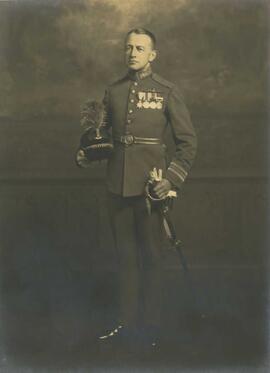Born 1790; educated privately; worked at sugar refining business of relative, 1808; attended lectures at medical school in Windmill Street, London, delivered by William Thomas Brande, Professor of Chemistry, Royal Institution, 1812; elected a Fellow of the Royal Society, London, 1814, largely due to the support of patrons including Brande, George Pearson, physician, and Samuel Lysons, antiquary and vice-president of the Royal Society, but also for having established a reputation for meteorological experiments carried out at a laboratory in his father's house, Lincoln's Inn Fields, London, and at which Daniell accumulated a substantial collection of rocks and minerals, [1812-1817]; geological tour of British Isles with Brande, 1815; with Brande, launched Journal of the Royal Institution , 1816; tour of France, Germany, Switzerland, 1816; meteorological observations commence, 1819; invented hygrometer, 1820; work on the atmosphere of hothouses, [1824]; collaboration with Michael Faraday, [1824-1845]; Director of Imperial Continental Gas Company including tour of France and Germany to promote gas lighting, 1825; helped establish Society for the Diffusion of Useful Knowledge, 1827; resigned from Imperial Continental Gas Company to concentrate on researches, 1829; developed version of pyrometer, 1830; Professor of Chemistry, King's College London, 1831-1845; collaboration with William Hallowes Miller, Professor of Mineralogy, University of Cambridge, on spectra, [1833]; developed Daniell constant cell, 1835-1837; taught chemistry, Military School of the East India Company, Addiscombe, Surrey, 1835-1844; Copley Medal, Royal Society, 1836; member, committee of the Royal Society on behalf of the Admiralty to standardise meteorological observations throughout the British Empire, 1836; Foreign Secretary, Royal Society, 1839-1845; member, Admiralty commission on protecting ships from lightning, 1839; died 1845.
Publications: With William Thomas Brande, A descriptive catalogue of the British specimens deposited in the geological collection of the Royal Institution (London, 1816); On a new hygrometer (London, 1820); Meteorological essays and observations (London, 1823); Chemistry (London, 1829-1838); On voltaic combinations (London, 1836); An introduction to the study of chemical philosophy (London, 1839); On the spontaneous evolution of sulpheretted hydrogen in the waters of the western coast of Africa (London, 1841).


